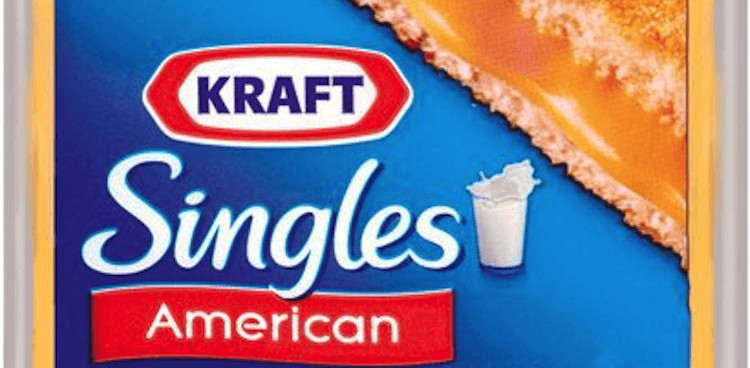
Hold on to your blue boxes and your viscous yellow liquids! This blog series will take you on a wild ride through the history, politics, science, and culture of processed cheese, including the origins of factory cheese, the rise of James L. Kraft, and the miracle of milk protein concentrate. In case you missed it, here’s a link to last week’s post on filled cheese.
On a cold, windswept morning in the 1880s, a teenage boy wearily shuffled in the dark—kerosene lantern in hand—toward the barn-shaped shadow in the distance. He could see the vapory particles of his breath becoming ice in the below-freezing weather. The boy paused for a moment and looked out into the distance. He liked to imagine he could listen to the muted roar of Niagara Falls, only fourteen miles away, but the chill of the morning meant he could only hear the anxious moos of the cows in the barn, eager to be milked, and the sound of his own shivering.
The boy opened the heavy barn door (the wood creaking in the cold), greeted his favorite cow with a friendly pat on a black-and-white spotted haunch, pulled up a low three-legged stool, and set about on his day’s work.
“Well Bess,” the boy said as he firmly yet gently milked the cow, each spurt against the tin pail echoing throughout the barn, “We gotta get ourselves a new deal. I mean, here I am, one of eleven children working on my parents’ Canadian dairy farm, and for what? Sure, the new cheese factories have increased dairy demand and cheese output, but the cheese always spoils. And that filled cheese stuff? Everybody hates it!”
The boy stood up. “You know what? Right here, right now, I vow to make a cheese that never spoils and that people around the world can enjoy for all time!”
Bess mooed in approval.
That boy was James Lewis Kraft, founder of Kraft Foods and inventor of one of the most widely popular process cheeses ever known to humankind.
OK, so maybe it didn’t happen exactly like this, but our good buddy J. L. was certainly enough of a badass that this (probably historically inaccurate) anecdote doesn’t seem too far-fetched.
James grew up in the tiny town of Stevensville, Ontario, but he knew he was destined for greater things. He moved off the family farm to become a store clerk in nearby Fort Erie, made some contacts at an American cheese company across the border, and eventually moved to Buffalo to work for a cheese factory. After acquainting himself with the ins and outs of the New York cheese industry, James decided it was time to strike out on his own: in 1903, the 29-year-old James L. Kraft packed up his bags along with $65 and moved to Chicago.
Upon arriving in the Windy City, James used his hard-earned savings to rent a wagon and a horse named Paddy and promptly entered into the retail cheese business. Every morning he would hitch up his horse and drive to the cheese market on South Water Street, the biggest in Chicago. Utilizing the dairy experience gained at his parents’ farm and the Buffalo cheese firm, James would choose the best and most popular cheeses of the day and visit the city’s grocers one by one. These grocers became increasingly appreciative of the young Kraft’s cheese expertise and not having to get up at the crack o’ dawn to beat the cheese rush.
James got a brisk business going but it still wasn’t enough for him. There were opportunities just waiting to be cashed in on, and James L. Kraft was going to get there before anyone else did. He had noticed that one of the biggest problems facing the grocers and cheesemongers he delivered to was the short shelf life, especially in hot weather. After handing over wheel after wheel of cheese only to see it harden and spoil in the humid summer months (refrigeration technology was only just getting its start), James figured there had to be a way to keep cheese fresh.
Eventually the Kraft-meister got it in his head that the real problem was bacteria. True, they were important in aging cheese and changing it from its initial milky state to semi-solid cheese gold, but that process could go overboard and turn cheese rotten. So James bought a big copper pot, hauled it to his apartment, and began to experiment. He figured if he cooked the cheese long enough, the bacteria would all die off and beautiful, bacteria-free cheese would remain. James filled his cauldron full of cheddar, put it over a flame, stirred it, and voila—he got a big oily, separated mass that tasted horrible.
Not one to be deterred, James spent several years trying to get the formula just right. Sometimes he turned the heat way up, other times he left it at a simmer; he’d stir very quickly, or very slow, or not all. Finally, one night, James set the heat to around 175º F and absentmindedly (yet constantly) stirred the pot longer than he intended, for around fifteen minutes. Lo and behold, to his utter amazement, the result was a goopy, creamy, bacteria-free cheddar cheese. James L. Kraft had invented the first of what would become known throughout the country as American Cheese.
Will Jimmy Kraft live to see his beloved, newfangled cheese sprout wings and soar over our nation’s heartland? Will those dastardly dairymen put a stop to the march of process cheese progress? Return for next week’s installment of real cheese product to discover the answers to all of your questions and more!






